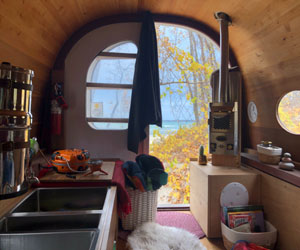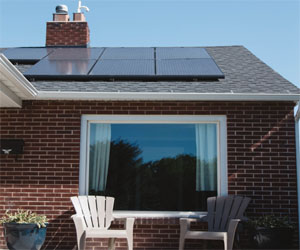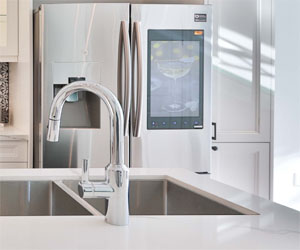


A Sustainable Solution For A Thirsty World

In a world where water scarcity and environmental concerns are becoming increasingly prevalent, water reuse systems emerge as a promising solution to address these challenges. These systems allow us to recycle and repurpose water, reducing the strain on freshwater resources and mitigating the environmental impact of wastewater disposal. This article explores the significance of water reuse systems and their role in sustainable water management.
The Need For Water Reuse Systems
Water is a finite resource, and its availability is under constant threat due to factors such as population growth, climate change, and pollution. Water reuse systems help alleviate the pressure on traditional water sources by treating and reusing water that would otherwise be discarded. This not only conserves precious freshwater but also reduces the energy and costs associated with water treatment and distribution.
Types Of Water Reuse Systems
Direct Potable Reuse (DPR): DPR systems treat wastewater to a high standard and then inject it directly into a drinking water supply, bypassing the need for natural recharge. Although this approach is effective, it requires advanced treatment processes and stringent monitoring to ensure water quality and safety.
Indirect Potable Reuse (IPR): IPR systems involve the injection of treated wastewater into an environmental buffer, such as an aquifer or reservoir, before it is eventually extracted for drinking water treatment. This approach provides an additional layer of natural treatment and is considered a safer alternative to DPR.
Non-Potable Water Reuse: Many water reuse systems are designed for non-potable applications. These systems treat wastewater to a level suitable for purposes like irrigation, industrial processes, toilet flushing, and cooling systems in power plants. Non-potable water reuse significantly reduces the demand on freshwater sources for these activities.
Environmental And Economic Benefits
Water reuse systems offer several compelling benefits:
Conservation: Reusing water reduces the amount of freshwater withdrawn from rivers and aquifers, helping protect ecosystems and maintaining their natural flow.
Energy Savings: Treating and transporting water requires energy. By reusing water locally, we reduce the energy footprint associated with long-distance water conveyance.
Cost Reduction: Municipalities and industries can save on water treatment and distribution costs by adopting water reuse systems.
Reduced Wastewater Discharge: Water reuse decreases the volume of wastewater discharged into the environment, reducing the risk of pollution.
Challenges And Considerations
Despite the advantages, implementing water reuse systems can present challenges. Public perception and concerns about the safety of recycled water, the need for advanced treatment technologies, and regulatory hurdles are among the obstacles that need to be addressed.
Water reuse systems are a vital component of sustainable water management strategies. They enable us to optimize water resources, conserve freshwater, and reduce the environmental impact of wastewater discharge. As the world grapples with water scarcity and environmental challenges, the adoption of water reuse systems is not only a prudent choice but a necessary one to ensure a reliable and sustainable water supply for future generations.
The Future Of Comfort And Efficiency
 Automation And Control
Automation And Control
A central component of smart living spaces is automation and control. Homeowners can remotely manage and monitor their living spaces using smartphones, tablets, or voice-activated virtual assistants like Amazon's Alexa or Google Assistant. This level of control allows for real-time adjustments and customization, enhancing the overall living experience.
Energy Efficiency
Smart living spaces are designed with a strong focus on energy efficiency. They incorporate advanced heating and cooling systems that can be programmed to operate only when needed, reducing energy waste. Smart thermostats learn user preferences and create schedules that optimize comfort while minimizing energy consumption. Lighting systems can adjust brightness based on natural light levels, further reducing energy usage.
Security And Safety
Security is a paramount concern in smart living spaces. These spaces feature advanced security systems equipped with surveillance cameras, motion sensors, and smart locks. Homeowners can monitor their properties in real-time, receive alerts about unusual activity, and control access remotely. This level of security enhances peace of mind.
Entertainment And Convenience
Entertainment and convenience are also central to smart living spaces. Smart televisions, sound systems, and streaming devices can be controlled with voice commands or through a centralized app, creating an immersive and user-friendly experience. Smart appliances, such as refrigerators, ovens, and washing machines, offer convenience features that make daily tasks more efficient and enjoyable.
Customization And Personalization
One of the key benefits of smart living spaces is customization and personalization. These spaces are designed to adapt to the needs and preferences of their occupants.
The Art Of Wilderness Living
 Wilderness living is all about embracing the raw and unspoiled natural world. It involves choosing to reside in remote, unpopulated areas, often far from the amenities and comforts of modern civilization. Those who opt for this lifestyle build their homes, forage for food, and harness the elements to survive. It's a challenging yet rewarding way of life that allows individuals to experience a profound sense of freedom, self-sufficiency, and harmony with nature.
Wilderness living is all about embracing the raw and unspoiled natural world. It involves choosing to reside in remote, unpopulated areas, often far from the amenities and comforts of modern civilization. Those who opt for this lifestyle build their homes, forage for food, and harness the elements to survive. It's a challenging yet rewarding way of life that allows individuals to experience a profound sense of freedom, self-sufficiency, and harmony with nature.
One of the fundamental aspects of wilderness living is self-reliance. Those who live in the wild learn to depend on their resourcefulness and creativity to meet their basic needs. Whether it's building shelter from natural materials, hunting, fishing, or foraging for food, these individuals rely on their ingenuity and skills to thrive in a challenging environment.
Living in the wilderness requires adaptability, as nature is unpredictable. The ability to respond to changing conditions, from weather patterns to the availability of food sources, is crucial for survival. Wilderness dwellers must be in tune with the rhythms of the natural world, adapting and learning as they go.
The off-grid lifestyle also emphasizes sustainability. Wilderness living encourages the minimal environmental impact by relying on renewable resources, generating one's own energy, and adopting eco-friendly practices. Sustainability is not just a choice but a necessity when living far from the conveniences of the modern world.
Community plays a significant role in wilderness living. While it may seem like a solitary existence, many individuals who choose this lifestyle join like-minded communities, which provide support, shared knowledge, and a sense of belonging. These communities often come together to share resources, build collective shelters, and ensure their collective well-being.
A Healthier, Safer, And Greener Way To Clean
 Environmental Impact: Harsh cleaning chemicals are not eco-friendly. When washed down drains, they can contaminate water systems and harm aquatic life. The production and disposal of these chemicals also contribute to pollution and waste.
Environmental Impact: Harsh cleaning chemicals are not eco-friendly. When washed down drains, they can contaminate water systems and harm aquatic life. The production and disposal of these chemicals also contribute to pollution and waste.
Chemical Residue: Residues from chemical cleaners can linger on surfaces, posing long-term health risks, especially in homes with children or pets.
Benefits Of Chemical-Free Cleaning
Healthier Indoor Air: Chemical-free cleaning means cleaner indoor air quality, reducing the risk of respiratory problems and allergies for you and your family.
Reduced Health Risks: Non-toxic cleaning products reduce the risk of skin irritations and other health problems associated with chemical exposure.
Environmentally Responsible: Chemical-free cleaning is gentle on the environment. It doesn't contribute to water pollution, and it reduces the production and disposal of harmful chemicals.
Safer For Children And Pets: Chemical-free cleaning eliminates the risk of harmful chemical residues on surfaces, making your home safer for kids and pets.
Methods Of Chemical-Free Cleaning
Vinegar And Water: A mixture of white vinegar and water can be used to clean glass, countertops, and even sanitize surfaces.
Baking Soda: Baking soda is an excellent abrasive cleaner. It can be used to scrub surfaces, deodorize, and even extinguish small fires.
Lemon Juice: Lemon juice can cut through grease and grime. It also leaves behind a fresh, citrus scent.






A Bright Path To Sustainable Energy
 The Solar Journey
The Solar Journey
Going solar involves harnessing the sun's abundant energy through the installation of photovoltaic (PV) solar panels on your property, typically the roof of your home. The process is both exciting and straightforward:
Assessment: The journey begins with a thorough assessment of your property's suitability for solar panels. Factors such as sunlight exposure, shading, and the condition of your roof are taken into account to determine the best solar solution for your needs.
Design And Planning: Once the assessment is complete, a customized solar system design is created. This design takes into consideration your energy requirements and the available space for solar panels.
Permitting: Before installation can commence, you'll need to secure necessary permits and approvals from local authorities. Your solar installation provider will assist you with this essential step.
Installation: The solar panels and related equipment, such as inverters and mounting systems, are professionally installed on your property. These panels are strategically placed to maximize exposure to sunlight.
Connection To The Grid: In many cases, residential solar systems are connected to the energy grid. This connection enables excess energy to be sent back to the grid, often earning you credits or compensation.
The Future Of Modern Living
 What Are Smart Appliances?
What Are Smart Appliances?
Smart appliances are traditional household devices, such as refrigerators, ovens, washing machines, and even coffee makers, that are equipped with advanced technology and connectivity features. These features allow them to be remotely controlled and monitored through a smartphone app or voice-activated virtual assistants. Smart appliances can perform a wide range of functions, from adjusting settings to sending notifications and alerts.
Convenience And Efficiency
One of the most significant advantages of smart appliances is the level of convenience they bring to everyday tasks. Imagine being able to preheat your oven on your way home, so dinner is ready as soon as you arrive. Smart appliances enable you to control and monitor their functions from virtually anywhere, giving you more control over your daily routines.
Energy Efficiency And Cost Savings
Smart appliances are designed to be energy-efficient. They often include features like energy-saving modes, remote scheduling, and real-time consumption tracking. For instance, smart thermostats can learn your heating and cooling preferences and create optimized schedules, which not only improve comfort but also save on energy costs. Smart appliances not only benefit your wallet but also contribute to environmental sustainability.
Integration With Smart Homes
Smart appliances are designed to be compatible with other smart home devices and systems. They can seamlessly integrate with centralized home automation hubs, allowing you to control multiple devices from a single app or voice-activated virtual assistant. This interconnected ecosystem enhances the overall smart home experience.
Voice Control
Many smart appliances can be controlled via voice commands through virtual assistants like Amazon's Alexa, Google Assistant, or Apple's Siri. This feature adds an extra layer of convenience, allowing you to adjust settings or start tasks without needing to touch a button or screen.